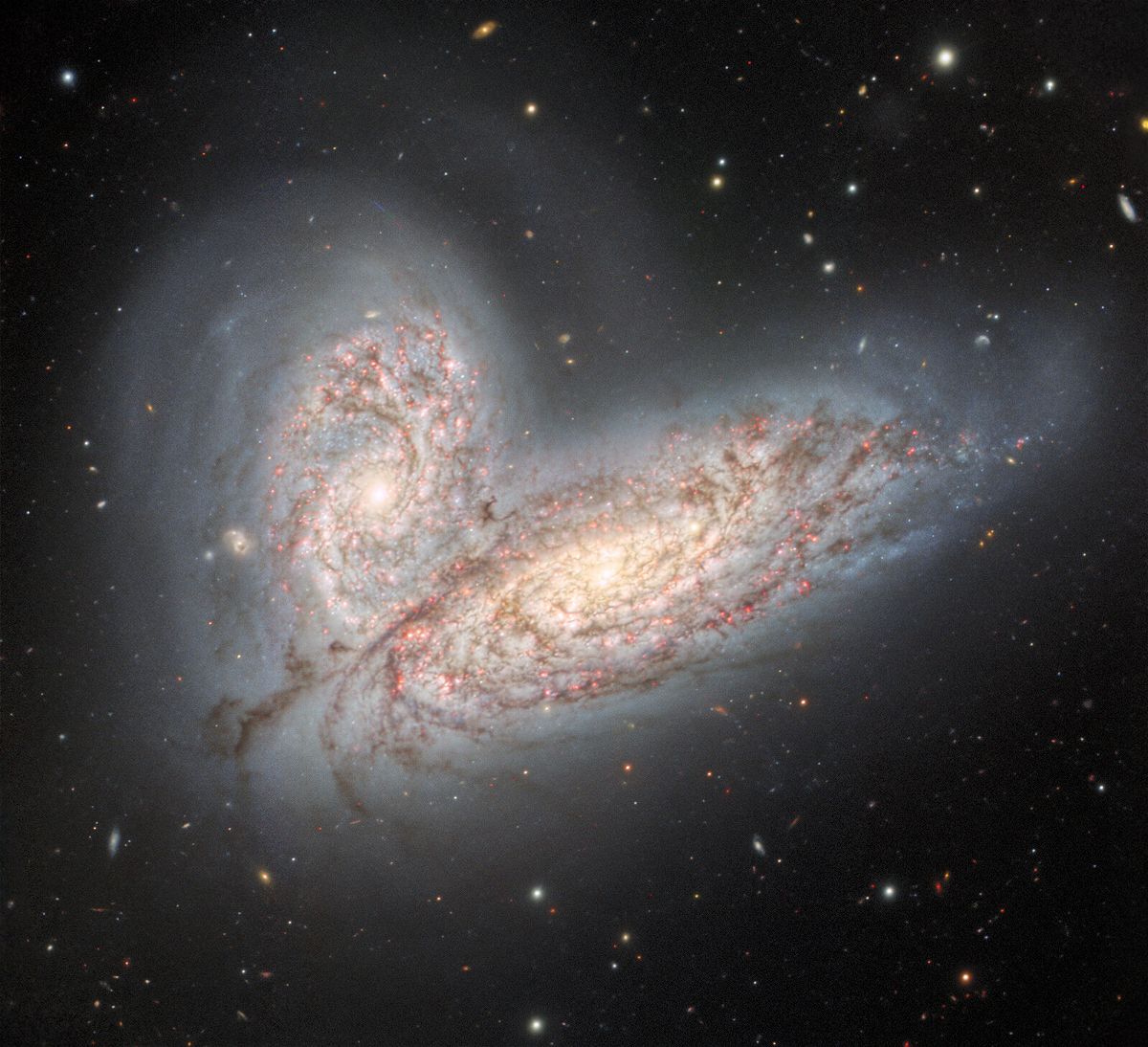New image of colliding galaxies previews the fate of the Milky Way

This image from the Gemini North telescope in Hawaii reveals a pair of interacting spiral galaxies — NGC 4568 (bottom) and NGC 4567 (top) — as they begin to clash and merge. The galaxies will eventually form a single elliptical galaxy in around 500 million years.
By Ashley Strickland, CNN
A new telescope image showcases two entangled galaxies that will eventually merge into one millions of years from now — and previews the eventual, similar fate of our own Milky Way galaxy.
The Gemini North telescope, located on the summit of Maunakea in Hawaii, spotted the interacting spiral galaxies about 60 million light-years away in the Virgo constellation.
The galactic pair NGC 4567 and NGC 4568, also known as the Butterfly galaxies, have just begun to collide as gravity pulls them together.
In 500 million years, the two cosmic systems will complete their merger to form a single elliptical galaxy.
At this early stage, the two galactic centers are currently 20,000 light-years apart and each galaxy has maintained its pinwheel shape. As the galaxies become more entangled, gravitational forces will lead to multiple events of intense star formation. The original structures of the galaxies will change and distort.
Over time, they will dance around each other in circles that become smaller and smaller. This tightly looped dance will pull and stretch out long streams of gas and stars, mixing the two galaxies together into something that resembles a sphere.
As millions of years pass, this galactic entanglement will consume or disperse the gas and dust needed to trigger star birth, causing stellar formation to slow and eventually cease.
Observations of other galactic collisions and computer modeling have provided astronomers with more evidence that mergers of spiral galaxies create elliptical galaxies.
Once the pair come together, the resulting formation may look more like elliptical galaxy Messier 89, also located in the Virgo constellation. Once Messier 89 lost most of the gas necessary to form stars, very little star birth occurred. Now, the galaxy is home to older stars and ancient clusters.
The afterglow of a supernova, first detected in 2020, is also visible in the new image as a bright spot in one of galaxy NGC 4568’s spiral arms.
Milky Way merger
A similar galactic merger will unfold when the Milky Way galaxy eventually collides with the Andromeda galaxy, our largest and nearest galactic neighbor. Astronomers at NASA used Hubble data in 2012 to predict when a head-on collision between the two spiral galaxies might occur. Estimates project that the event will happen in about 4 billion to 5 billion years.
Right now, a massive halo that surrounds the Andromeda galaxy is actually bumping up against the Milky Way galaxy’s halo, according to research based on Hubble Space Telescope data that published in 2020.
Andromeda’s halo, a large envelope of gas, extends out 1.3 million light-years from the galaxy, almost halfway to the Milky Way, and as much as 2 million light-years in other directions.
This neighbor, which likely contains as many as 1 trillion stars, is similar in size to our large galaxy, and it’s only 2.5 million light-years away. That may sound incredibly distant, but on an astronomical scale, that makes Andromeda so close that it’s visible in our autumn sky. You can see it as a fuzzy cigar-shaped bit of light, high in the sky during the fall.
And if we could see Andromeda’s massive halo, which is invisible to the naked eye, it would be three times the width of the Big Dipper constellation, which dwarfs anything else in our sky.
Scientists at NASA said it’s unlikely that our solar system will be destroyed when the Milky Way and Andromeda merge, but the sun might get kicked into a new region of the galaxy — and Earth’s night sky may have some new spectacular views.
The-CNN-Wire
™ & © 2022 Cable News Network, Inc., a Warner Bros. Discovery Company. All rights reserved.



